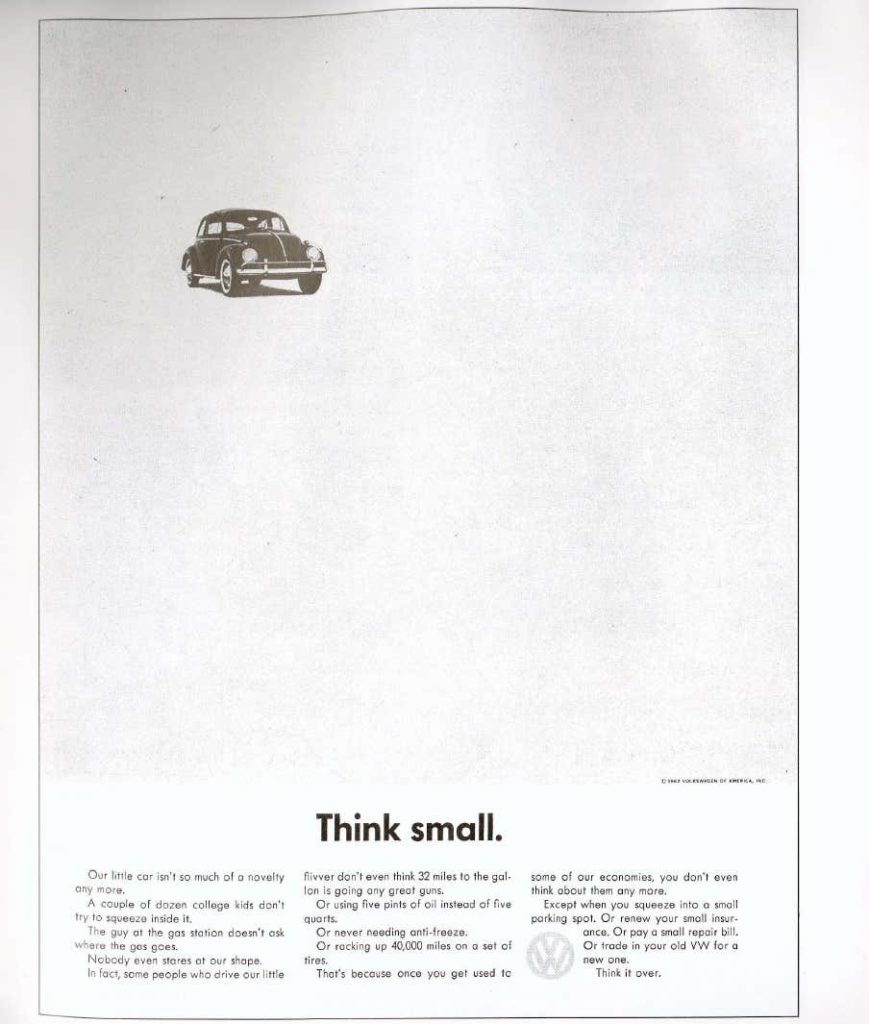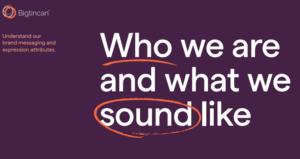When anything gets diluted it becomes less powerful. Like a weak drink (which you’d send back or politely endure despite your displeasure). Something— like a cocktail or brand messaging— can become diluted for a few reasons: adding too many ingredients, following the wrong recipe, or neglecting it for too long.
When it comes to your brand messaging you want to avoid dilution at all costs. You want it to be strong, clear, and have staying power. That requires keeping it simple.
But how do you “keep it simple” when your products are complex? Whether you’re from a medtech, pharma, financial services, or B2B tech company, the answer is the same: Brand. By building a strong brand with a simple, clear message you will empower your go-to-market teams to reach the customer (who is at the heart of all this) despite the complexity of your products.
This article will provide you with an introduction to three approaches for building a strong brand with simple messaging as well as solutions for disseminating that messaging throughout your organization so it doesn’t get watered down.
Creating simple, powerful brand messaging
Simon Sinek- Start with Why
Synopsis: In studying the leaders who've had the greatest influence in the world, Simon Sinek discovered that they all think, act, and communicate in the exact same way—and it's the complete opposite of what everyone else does. Sinek calls this powerful idea The Golden Circle, and it provides a framework upon which organizations can be built, movements can be led, and people can be inspired. And it all starts with WHY (source).

Sinek’s Golden Circle
In his book and related TED talk Start with Why, Sinek offers a simple way to distill and build a strong message regardless of what you’re selling—focus on why, how, and what, in that order. He calls it The Golden Circle, or, “the world’s simplest idea.” He emphasizes creating ideas that inspire by starting with why, as opposed to starting with what.
These are the key points of Sinek’s approach to building a powerful brand message:
- Lead with your brand, not products: “People don’t buy what you do, they buy why you do it.”
- “Communicate from the inside out.” Or lead with your beliefs. What you believe about the world and how you want everyone to see you. By leading with why, with your brand, your beliefs and what your company represents, you appeal to “the part of the brain that controls decision-making.” You also gain customer loyalty.
- Inspire: Sinek argues that the majority of people won’t try something unless someone else tries it first. So if you focus on appealing to innovators everyone else will follow.
We took this approach with our recent rebrand.
Miri Rodriguez- Brand Storytelling: Put customers at the heart of your brand story
Synopsis: Written by the award-winning storyteller Miri Rodriguez at Microsoft, Brand Storytelling is a clear, actionable guide that goes beyond content strategy, simplifying where to begin, how to benchmark success and ensuring a consistent brand voice throughout every department (source).
Rodriguez builds on Sinek’s ideas, referencing his framework directly: “Storytelling for branding takes you beyond the coherence of the why and meticulously spells out the how through poignant storytelling design thinking principles and growth mindset techniques that will enable you to pierce through ancient traditional marketing ideals and fast track you to emerge as an innovation leader in your own space.”
Here are the key strategies detailed in Brand Storytelling:
- Lead with emotion: “Neurological studies have also shown that when we’re exposed to stories the brain produces the following transmitters or hormones: dopamine, endorphins, oxytocin.” “As marketers, we know that consumers do not make rational decisions when they buy. They make emotional decisions and then rationalize them with logic.”
- Be memorable: “Another alluring power of story is attention-keeping. Stories unleash neurochemicals, such as oxytocin and cortisol, which create physical tension, and help in keeping the audience’s attention. Even when presenting dry or boring content such as numbers and data, if you strategically introduce a character, plot and conclusion to the content, you have a much better chance to entice your audience.”
- Have and transfer values: “Stories are also great at influencing and transferring values. Stories have always been used to teach guiding principles and shape behaviors.”
- Have a complete narrative arc: “Today’s connected customer is inadvertently weaving together every aspect of your brand as a rich tapestry of the brand story. An ad, an email, a meeting with a salesperson or a customer service representative. These are all part of the brand story in the customer’s mind and if not designed to be intentionally cohesive, there’s a great chance that you may lose the customer somewhere.”
- Have a mission as a strong foundation: “The brand mission is the overarching theme of the story.”
David Ogilvy- Ogilvy on Advertising
Synopsis: A candid and indispensable primer on all aspects of advertising from the man Time has called "the most sought after wizard in the business" (source).
As a master of selling at scale, Ogilvy has tons of evergreen advice about strong, simple messaging.

Ogilvy ad
Here are his most relevant points pertaining to brand messaging:
- Have a big idea: This is difficult to do—but the most important. Ogilvy claims to have had fewer than 20 big ideas in his entire career. Luckily, when thinking about your company’s brand, you only need one big idea from which the messaging stems. According to Ogilvy, “It will help you recognize a big idea if you ask yourself five questions:
1.Did it make me gasp when I first saw it?
2.Do I wish I had thought of it myself?
3.Is it unique?
4.Does it fit the strategy to perfection?
5.Could it be used for 30 years?”
- Decide on your brand image: “Image means personality.” Ogilvy may have been discussing the personality of products, but personality is the heart of a brand. It’s how your company and, by extension, your products are perceived. And a good personality goes a long way. “Products, like people, have personalities, and they can make or break them in the market place. The personality of a product is an amalgam of many things - its name, its packaging, its price, the style of its advertising, and, above all, the nature of the product itself.”
- “Do your homework”: In his book, Ogilvy emphasizes researching the product before writing anything. While understanding the product is essential for strong messaging, it is more important to apply this principle to the customer—which is part of understanding the product. Because products are for people, as Ogilvy emphasizes in his definition of positioning: “what the product does and who it is for.”
- Focus on the benefits to your customers—not your competitors: “If you and all your competitors make excellent products, don’t try to imply that your product is better. Just say what’s good about your product— and do a clearer, more honest, more informative job of saying it.”
- “Down with committees”: This comes back to keeping it simple. Ogilvy states, “Many campaigns are too complicated. They reflect a long list of objectives, and try to reconcile the divergent views of too many executives. By attempting to cover too many things, they achieve nothing.” In essence, you can’t be everything to everyone. Know your customer, keep the focus on them, and have a strong brand built on a big idea as an anchor to return to when things start getting complicated.
The power of brand messaging for complex products
Regardless of which of these three messaging frameworks you choose, if you do it right, you will achieve the same effect— simplifying the buying and selling process for go-to-market teams and customers. Strong messaging benefits complex products (and sales cycles) in two main ways:
- Aligns sales and marketing teams around a set of beliefs and values to pass on to the customer
- Leads with value and creates an emotional connection for the customer
Take Facebook (or Meta) as an example. A brand that has not only come under fire in the past few years, but covers an ever-expanding suite of complex products that includes AR, VR, and multiple social apps. How have they kept their message and customer base strong despite all of these developments? By keeping it simple.
In the Meta announcement in October 2021, there was one strong message that came through: “Connecting with people.” It doesn’t matter whether you’re using a smartphone app, building an avatar, or using a VR headset— you’re just chatting with Grandma.

Image from Meta homepage
It’s smart. Meta customers have an emotional reason and a clear understanding of the value they will get from these products. Without those guiding principles, any number of distractions could influence the customer not to buy— costs, news stories about the company, a lack of thorough understanding of the technology, and so on. But there’s a clear end goal: that connection with family.
Meta products may be a far cry from surgical equipment or merger and acquisition management software, but it doesn’t matter what your product is when both the buyer and the seller are focused on a clear, powerful message that serves as the end goal. They are aligned around a core set of beliefs, which makes the exchange simple.
When you have a specialized, highly technical product that customers may not completely understand at first, your brand efficiently explains who you are and why you do what you do. It eliminates the need for sellers to get into the weeds with minor features or what competitors offer (see Ogilvy’s note on this above). And if customers have an emotional connection and great experience with your brand, they don’t care if another vendor has one or two features you don’t have or if implementation won’t be as easy as they thought.
Expressing a clear set of values in your messaging also helps sellers and buyers quickly and easily recognize when there isn’t a good fit, which saves everyone time. If you’re selling custom compost-building kits and the customer doesn’t believe that introducing compost to every home in America would change the world, then you know you can move on to someone who does.
Enabling your go-to-market teams to deploy messaging
Whether you are rolling out a whole new brand or launching a new product, disseminating the message requires continuous and consistent reinforcement through training, collaboration between your customer-facing teams, and community building within your organization.

Example of a brand guidelines slide
Your roadmap from building to distributing messaging may end up looking something like this:
- Research customers to determine how products benefit them and discover the common beliefs your company shares with them
- Determine your brand’s personality
- Choose a messaging framework for a structured approach
- Create and test messaging
- Build consensus internally
- Create internal resources such as overview decks, persona/problem frameworks, training videos, certification programs, and/or games to reinforce messaging
- Create public-facing assets reflecting messaging such as website copy, ebooks, articles, datasheets, email templates, or overview videos to communicate messaging to customers
- Encourage go-to market collaboration by offering a shared workspace
- Open a dialogue to build community
Reinforcing the message though training
Brand pertains to the whole company. It is not just a marketing concern.
A huge part of the reason it’s so important to keep messaging simple is so sales reps can clearly communicate how choosing your brand benefits your customers— especially when the products are complex. After all, your sales reps are the first people customers will speak to. So the brand message needs to be consistent for customers during the transition from reading marketing materials to speaking to SDRs and AEs.
Equipping reps with messaging that resonates with customers— whether they’re giving an overview of your company or demoing a single product— avoids information overload that distracts everyone in the conversation.
Many sales enablement tools have course creation components that allow go-to-market teams to create custom training content for sales reps, such as short videos on new product messaging or brand messaging certification programs.
Methods like just-in-time learning and microlearning allow for continuous reinforcement of messaging by delivering it in bite-size training sessions. This helps go-to-market team members retain information and keep it fresh in their minds.
Ensuring message consistency through collaboration and community
To create consensus around messaging and present a united front, you need to build collaboration and community among your go-to-market teams.

Bigtincan Content Hub
A content management system is one solution for building consensus, acting as a shared space where sales, marketing, and any teams you wish to include, can collaborate on projects. You can create and share messaging documents, slide decks, datasheets, and other assets so any and all messaging stakeholders stay on the same page.
Some content management tools even offer commenting and chatting features that allow for dialogue between different teams to help them stay connected as messaging rolls out.
Remember that watered down cocktail from earlier? Sales reps have a habit of adding their own ingredients if they feel something isn’t strong enough— and end up serving customers something entirely different from the approved messaging. Providing certification programs and a repository of approved content helps prevent that.
Whether building new brand messaging or looking for a better way to share it throughout your organization, remember that simplicity is key. Start with why, tell a story, and have a big idea.
And above all, make it about people. No matter how complex your products are, products are for people. And people are the heart of your brand— both your customers and your team members alike. Simple as that.
